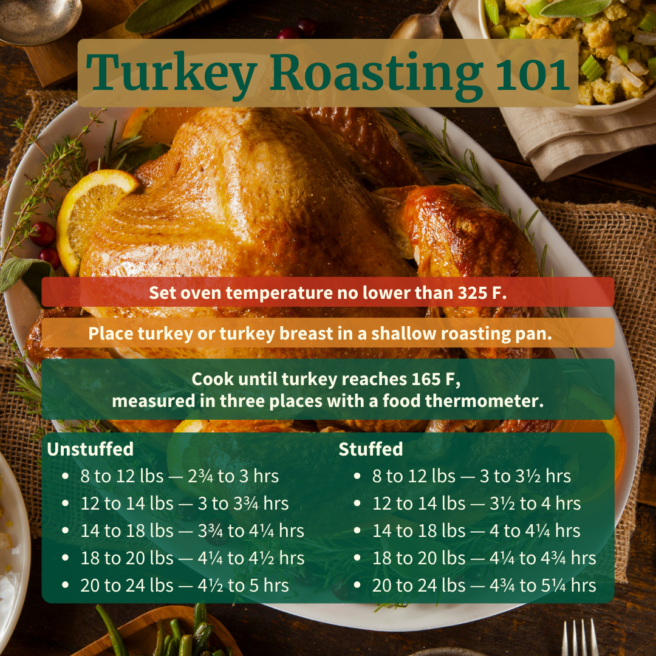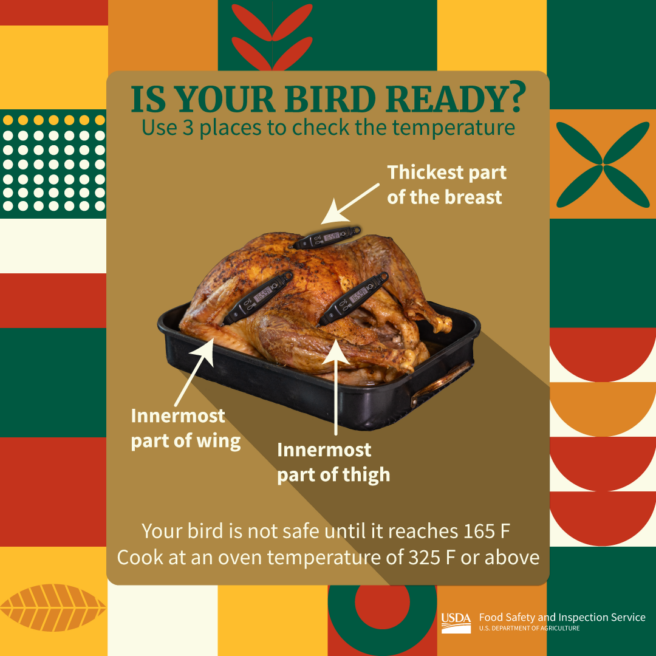As families across the nation prepare for Thanksgiving feasts, the U.S. Department of Agriculture (USDA) is issuing a strong reminder to prioritize food safety. With millions of turkeys heading to tables, safe handling practices can mean the difference between a joyous holiday and a foodborne illness. “Unsafe handling and undercooking… Continue Reading Consumer Education, Cooking Temperatures, For Consumers, food safety tips, Thanksgiving, turkey, USDA Food Safety News
As families across the nation prepare for Thanksgiving feasts, the U.S. Department of Agriculture (USDA) is issuing a strong reminder to prioritize food safety. With millions of turkeys heading to tables, safe handling practices can mean the difference between a joyous holiday and a foodborne illness.
“Unsafe handling and undercooking your turkey can cause foodborne illness,” said Dr. Emilio Esteban, USDA Under Secretary for Food Safety. “To ensure your Thanksgiving meal is wholesome and memorable without the illness, follow the four steps to food safety: clean, separate, cook, and chill.”
Dangerous food safety practices to avoid
The USDA has outlined seven risky habits that could jeopardize your Thanksgiving meal:
- Not washing hands or kitchen surfaces thoroughly:
Handwashing with soap and water for at least 20 seconds is critical before, during, and after handling food. Surfaces that come into contact with raw turkey or its juices should be sanitized to prevent the spread of harmful bacteria. - Using the same cutting boards and utensils for raw and ready-to-eat foods:
Cross-contamination is a leading cause of foodborne illness. Use separate cutting boards and utensils for raw meat and ready-to-eat items. - Defrosting turkey on the kitchen counter:
Turkeys should be thawed in the refrigerator or in cold water, not on the counter, to avoid the “Danger Zone” (40–140 degrees F) where bacteria multiply rapidly. - Cooking turkey overnight at a low temperature:
Slow-cooking below 325 degrees F is unsafe. All parts of the turkey should reach an internal temperature of 165 degrees F, measured with a food thermometer. - Relying only on a pop-up timer:
While helpful, pop-up timers can be inaccurate. Use a food thermometer to check the internal temperature in multiple spots. - Stuffing the turkey the night before:
Stuffing should be prepared just before cooking and reach an internal temperature of 165 degrees F. Refrigerating a stuffed turkey overnight increases the risk of bacteria growth. - Keeping leftovers for more than a week:
Leftovers should be refrigerated within two hours and consumed within four days. For longer storage, freeze leftovers, which are best quality within two to six months.
Tips for a safe Thanksgiving feast
- Thawing turkey safely

Refrigerator thawing is the safest method, requiring 24 hours for every four to five pounds. A 15-pound turkey, for example, will take about three days to thaw. For a quicker option, submerge the turkey in cold water, change the water every 30 minutes, and cook it immediately after thawing.
- Cooking turkey safely

Regardless of your cooking method—roasting, frying, or smoking—use a food thermometer to ensure all parts of the turkey reach 165°F. Check the thickest part of the breast, innermost wing, and innermost thigh for accuracy.
- Preventing cross-contamination

Keep raw turkey separate from other foods, and avoid rinsing the bird, as splashing water can spread bacteria around the kitchen. If you choose to rinse, thoroughly clean and sanitize the sink and surrounding surfaces afterward.
- Handling leftovers
Store leftovers in shallow containers within two hours of cooking. Before eating, reheat leftovers to 165°F.
Support from USDA experts
The USDA’s Meat and Poultry Hotline will be open on Thanksgiving Day from 8 a.m. to 2 p.m. EST to answer last-minute questions. Consumers can reach the hotline at 888-MPHotline (888-674-6854), email MPHotline@usda.gov, or use live chat at ask.usda.gov.
With proper planning and attention to safety, Thanksgiving can remain a time for joy and gratitude, free from the risks of foodborne illness.
(To sign up for a free subscription to Food Safety News, click here.)








